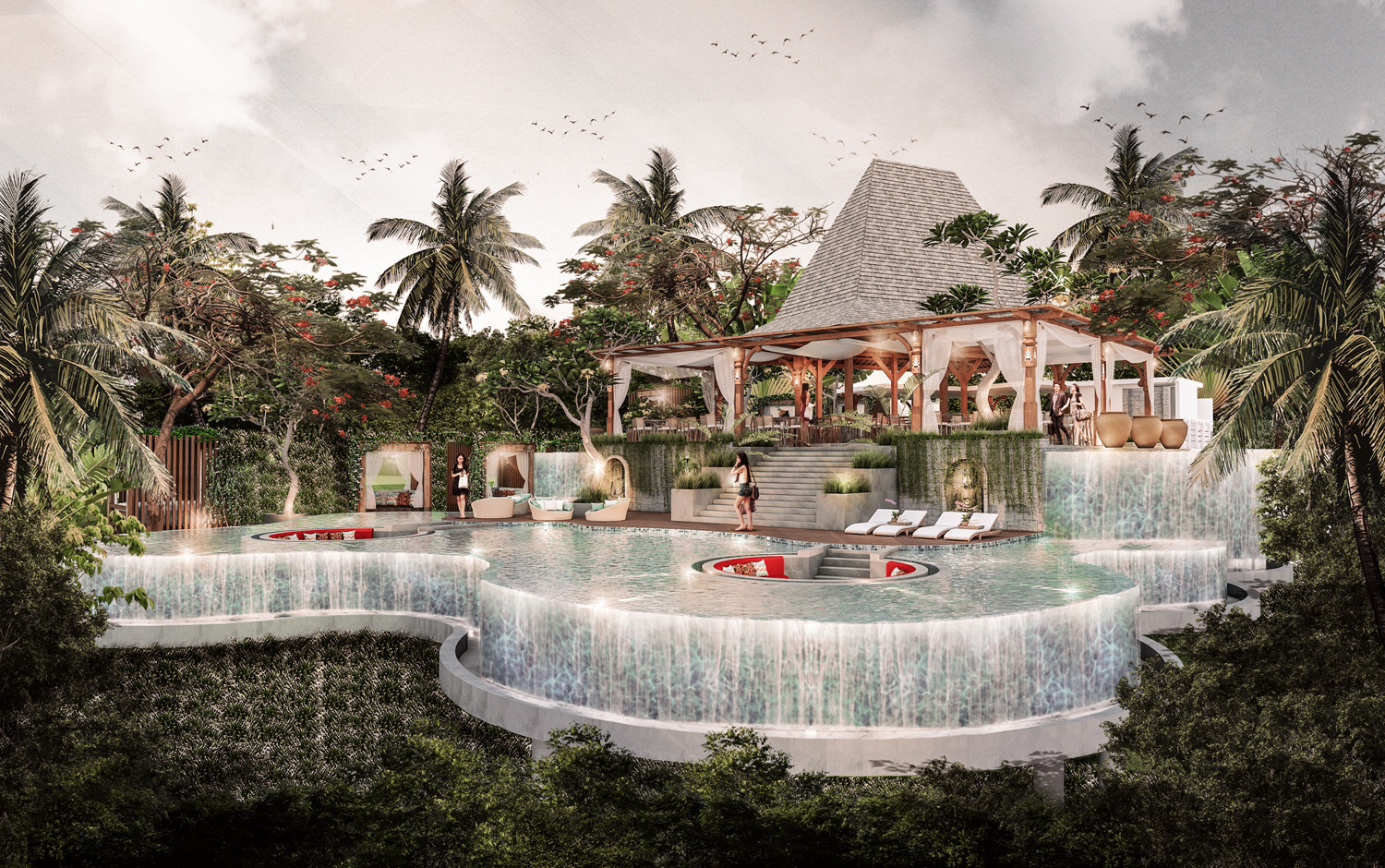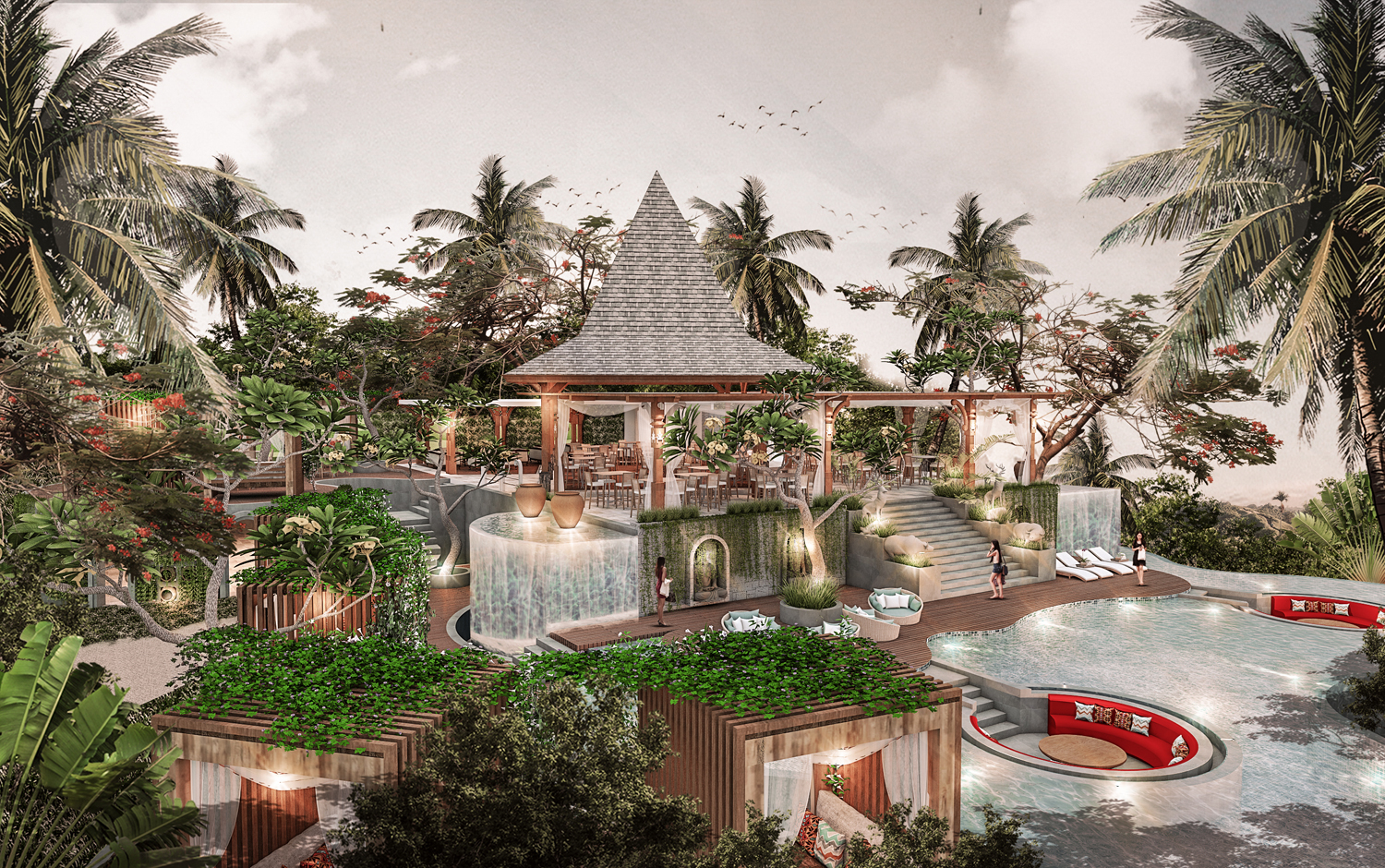
R O N D J I R E S T A U R A N T
PURPOSE :
RESTAURANT
|
AREA :
7,200 SQM
|
LOCATION :
UBUD, BALI, INDONESIA
|
YEAR :
2018
Museum Blanco is a well-known museum with a high tourist visitation rate, and to enhance the facilities for visitors, a restaurant was created named after Antonio Blanco's wife, Ni Rondji. The building still adopts the local Balinese architectural style, rich in culture and uniqueness. Here, we share the history of the Maestro Antonio Blanco.
Antonio Maria Blanco (September 15, 1912 – December 10, 1999) was a painter of Spanish-American descent. Born in the Ermita district of Manila, Philippines, he initially lived and worked in Florida and California, USA, until his heart was drawn to explore the islands of the Pacific Ocean as a source of inspiration, similar to painters like Paul Gauguin, José Miguel Covarrubias, and others. He planned to go to Tahiti but fate led him to Hawaii, Japan, and Cambodia, where he became an honored guest of Prince Norodom Sihanouk.
From Cambodia, he then traveled to Bali in 1952 and married a Balinese traditional dancer named Ni Ronji in 1953. Bali provided Antonio with essential elements to fuel his artistic genius: beautiful landscapes, a dream-like environment, and the extraordinary presence of art and love.
Since then, Antonio never abandoned his dreams and began realizing them in his life and artworks. He built a residence and museum in Ubud, his enchanting resting place. The building was constructed based on his preferences, where Antonio felt so comfortable living that he rarely ventured outside. The land for Antonio's residence was a gift from the Ubud King of Puri Saren Ubud, Tjokorda Gde Agung Sukawati.
Antonio Blanco's art focused on women, and he can be considered a perpetual feminine painter—a master of romantic-expressive painting. Throughout his career, Antonio received various awards, including the Tiffany Fellowship, Chevalier du Sahametrai from Cambodia, Society of Painters of Fine Art Quality from President Soekarno, and the Prize of the Art Critique in Spain. He was also awarded the Cruz de Caballero from the Spanish King Juan Carlos I, granting him the title "Don" before his name.
Many collectors, including actress Ingrid Bergman, Mexican telenovela queen Thalía (Ariadna Thalía Sodi Miranda), Presidents Soekarno and Soeharto of Indonesia, former Vice President Adam Malik, Prince Norodom Sihanouk, and Michael Jackson (the King of Pop, who signed one of Antonio's paintings as a donation to the Children of the World Foundation), appreciated his paintings.
Antonio's dream of having a museum was eventually realized, named The Blanco Renaissance Museum. The museum, constructed on December 28, 1998, in his serene residence, stands proudly, housing over 300 works of Antonio, chronologically displaying his aesthetic achievements from his youth to the most recent. Architecturally, the rococo-style museum also reflects Bali's philosophy and wisdom.
Don Antonio Maria Blanco passed away on December 10, 1999, in Denpasar, Bali, due to heart and kidney diseases. As Antonio had embraced Hinduism, Bali-style cremation preparations were held at a funeral home in Campuhan, Ubud, starting from December 23, 1999. The cremation ceremony (Ngaben) itself took place on December 28, 1999.

